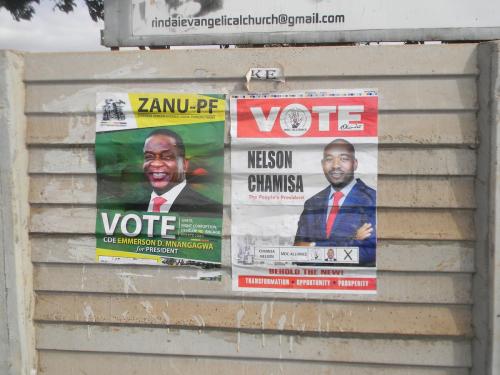NATO leaders will gather in Chicago in May for their third summit in four years. Such meetings are, almost by definition, slated to produce success. Chicago can be expected to keep to that model. The Alliance will seek to send a message of shoulder-to-shoulder solidarity as NATO begins its endgame in Afghanistan, confronts continued turmoil on its southern flank, and ponders the implications of Vladimir Putin’s return to the Russian presidency. Coming five months before the U.S. presidential election, President Obama has a special incentive to make the meeting a showcase of his diplomatic savvy.
Sixteen months ago, NATO’s nuclear posture and the issue of U.S. nuclear weapons in Europe appeared to be major issues for Chicago. Clear splits had emerged among allies in the run-up to the November 2010 summit in Lisbon. That meeting papered over the differences by mandating a deterrence and defense posture review (DDPR) to consider the appropriate mix of nuclear, conventional and missile defense forces for the Alliance.
Since Lisbon, however, the nuclear issues seem to have receded in relative importance. First, Afghanistan will occupy center-stage. Second, conventional force capabilities and “smart defense” will command greater attention than was anticipated when NATO leaders mandated the DDPR in 2010. The Libya campaign revealed unexpected gaps in the Alliance’s conventional military capabilities, and tightening defense budgets are affecting defense postures on both sides of the Atlantic. Third, allies appear determined to avoid a divisive fight over nuclear questions in the run-up to Chicago.
To be sure, different views persist among NATO allies over such questions as to whether there is an external threat to the Alliance that requires the continued deployment of U.S. nuclear weapons on European soil. NATO, however, has agreed that nuclear issues will be addressed by the Alliance as a whole, not unilaterally. Most allies understand that—quite apart from their deterrent role—those weapons play an important part in reassuring allies who feel more exposed to external threats, such as the Baltic and Central European states. Indeed, the nuclear issue today is more about reassurance than deterrence.
Expectations on nuclear issues for the summit should be modest. NATO leaders will almost certainly reiterate the need for transparency on U.S. and Russian non-strategic nuclear weapons, call for those weapons to be relocated away from the NATO-Russia border (a call that would fall predominately on the Russian side), and restate that those weapons should be included in the next round of U.S.-Russian nuclear negotiations. Alliance leaders will likely also reiterate that further reductions of U.S. nuclear weapons in Europe should take place in the context of actions by Moscow, creating a possibility for forward movement on reductions if the Russians offer some reciprocity.
None of this will break dramatic new ground. It will leave unanswered questions about the future of NATO’s nuclear posture and the presence of U.S. nuclear weapons in Belgium, Germany, Italy, the Netherlands and Turkey. Although allies agree that they will take no unilateral decisions, there is an elephant in the room … or lurking out in the hallway: the German air force is in the process of replacing its nuclear-capable Tornado aircraft with the Eurofighter, which is not capable of delivering nuclear weapons.
While the Germans plan to stretch the life of some Tornados to maintain a nuclear capability to beyond 2020, at some point those aircraft will be retired. No one in Germany sees any prospect of continuing a nuclear delivery role after the Tornado. That will have a major impact on whether the Dutch and Belgians decide to maintain a nuclear role. (Although the Dutch plan to procure the F-35, which will have a nuclear delivery variant, it is questionable whether The Hague could sustain domestic support for that role—and for continued basing of U.S. nuclear weapons—if Germany is clearly on a course for withdrawal of the weapons based on its soil.) The reverberations could reach Italy and Turkey as well.
NATO, however, does not have to settle these questions in Chicago. It can kick the can down the road. In fact, a DDPR that pushes the question of NATO’s nuclear-capable aircraft into the future and papers over the issue may not be a bad outcome. It could be the preferable outcome for an arms control approach that seeks to reduce Russia’s advantage in non-strategic nuclear weapons. Why?
Suppose the summit were to agree on and announce a unilateral withdrawal of all U.S. nuclear weapons. U.S. negotiators would lose their bargaining chip value in a future negotiation with the Russians. Those weapons may not provide much of a chip. But if one seeks to reduce a Russian numerical advantage that is at least four-to-one, every little bit helps.
Alternatively, if NATO leaders were to state that U.S. nuclear weapons should remain for the foreseeable future, it would be difficult for U.S. negotiators to ask their Russian counterparts what they would trade for a withdrawal of the weapons. And it is very hard to see Moscow accepting a new treaty that does not include a requirement that nuclear weapons be based on national territory.
In the end, if the other terms of the treaty are attractive, most if not all NATO members might find withdrawal an acceptable outcome. It would be important that Russia agree to transparency, relocation of weapons toward the Ural Mountains, and a significant cut in its non-strategic nuclear arsenal, and much would depend, of course, on whether Moscow ultimately is prepared to deal seriously on these issues. If so, a Chicago summit that fails to find a long-term consensus on NATO’s future nuclear posture might nevertheless provide a foundation for an arms control path that could resolve the question.
The Brookings Institution is committed to quality, independence, and impact.
We are supported by a diverse array of funders. In line with our values and policies, each Brookings publication represents the sole views of its author(s).



Commentary
Op-edNATO, the Chicago Summit and Nuclear Weapons
March 5, 2012